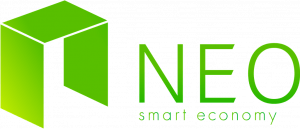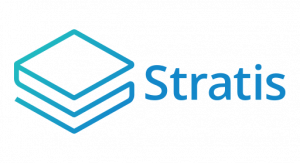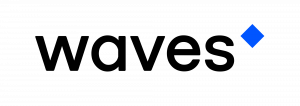After Bitcoin launched, keen developers noticed that its underlying technology, the blockchain, could do more than just send digital tokens from one point to another on the internet. With a little redesigning, they realized the protocol, running on top of a peer-to-peer network, could function as a server back end or a virtual machine that powered decentralized applications (dapps) of all kinds.
It turned out to be difficult to tinker with Bitcoin, however, and make it function as a virtual machine that could power dapps. Over time, developers created code from scratch or built blockchains on top of Bitcoin that had such dapp-running capabilities.
[SEE ALSO: The 5 Most Promising Blockchain Projects of 2018]
The following is a list of the top eight blockchains that function as virtual machines used to run decentralized applications:
1. Ethereum
![]()
Ethereum was the first blockchain virtual machine. It was launched in 2014 after a crowd sale of its native coin ether (ETH) raised close to US$20 million. It has grown to be the default platform for most projects that launch smart contracts, tokens and decentralized applications.
Because of this capacity, Ethereum has supported the bulk of initial coin offerings (ICOs), the method by which startups and project teams create blockchain-based tokens to sell to investors and backers.
Ethereum was designed to use the proof-of-work (PoW) consensus mechanism. As with Bitcoin, this means it requires miners to consume electricity by using hardware to solve complex mathematical problems and arrive at consensus on the status of the shared ledger.
The community and the Ethereum foundation, however, have plans to migrate the blockchain from proof of work to a proof-of-stake (PoS) version of the consensus protocol. This change is slated to take place by the year 2020.
Decentralized applications and smart contracts built on Ethereum are primarily written in the Solidity language. To price the computation capacity consumed by applications, the platform uses a unit known as gas, which measures the cost of using ether, the native currency of the blockchain.
2. Ethereum Classic
 The original Ethereum blockchain, known as Ethereum Classic (ETC), was abandoned by the majority of the Ethereum community in 2016 for the upgraded version that we know of today as Ethereum (ETH). The abandoning of the old chain was motivated by an attempt to steal money from a dapp known as the Decentralized Anonymous Organization (DAO).
The original Ethereum blockchain, known as Ethereum Classic (ETC), was abandoned by the majority of the Ethereum community in 2016 for the upgraded version that we know of today as Ethereum (ETH). The abandoning of the old chain was motivated by an attempt to steal money from a dapp known as the Decentralized Anonymous Organization (DAO).
A minor portion of the community stuck with the old version and they have since maintained it to be one of the most valued in terms of market capitalization. It is in the top 20 on CoinMarketCap, with a valuation of over US$1 billion.
The Ethereum Classic blockchain maintains a lot of similarities with Ethereum. For example, its native currency is called ether. But it is traded on exchanges under the ticker symbol ETC. Its blockchain also uses the gas feature to price the computational capacity consumed by smart contracts and decentralized applications.
A variety of languages are used to write smart contracts and applications. Just as with Ethereum, Solidity is the most used language. The blockchain uses PoW as a consensus protocol, and the community is not actively seeking to move to another consensus mechanism, as is the case with Ethereum.
Since parting with Ethereum, Ethereum Classic has undertaken several improvement steps that differentiate it. In June 2018, the development team released Callisto, a new side chain scaling solution.
3. NEO
Developed by a company called Onchain, the NEO blockchain was launched in 2014 as Antshares. It rebranded to NEO in 2017.
The project is focused on supporting smart contracts and decentralized applications that relate to digital asset transfers and digital identity verifications. The NEO blockchain has a native currency by the same name. The currency’s inflation limit is capped at 100 million. Unlike most other cryptocurrencies, the NEO token is not divisible below a unit of one.
Aside from the native currency, the NEO platform uses gas as the unit for metering computational capacity. The gas amount is also capped at 100 million, but unlike the native currency, it can be subdivided into decimal places below a single unit.
 The gas spent by users to activate their smart contracts and applications on the blockchain is paid to consensus nodes, also known as bookkeepers, that validate transactions.
The gas spent by users to activate their smart contracts and applications on the blockchain is paid to consensus nodes, also known as bookkeepers, that validate transactions.
The NEO consensus protocol is known as delegated proof of stake (dPoS). Holders of the native currency elect validators who run the consensus nodes.
The languages used to write applications and smart contracts on NEO are Java, C Sharp, Visual Basic .Net, F Sharp and Kotlin.
4. EOS
Block.one , the company behind EOS, raised its capital through an ICO carried out on the Ethereum platform. The EOS ICO was among the largest, raising over US$4 billion in the span of a year.
, the company behind EOS, raised its capital through an ICO carried out on the Ethereum platform. The EOS ICO was among the largest, raising over US$4 billion in the span of a year.
EOS uses delegated PoS as its consensus protocol. Anyone who wants to help maintain the shared ledger must present themselves as a candidate and be voted into the miner position by other users. EOS miners are known as block producers and they total 21 spread around the globe.
On the EOS blockchain, your capacity for running applications depends on the number of native tokens you hold. This is because the amount of coins in your possession signifies the amount of computing capacity at your disposal.
If you are running small applications, you may only need to hold a small number of coins. If you intend to run bigger and more complex applications, then you’ll need to hold more.
Once you no longer need computing capacity, you can sell your coins on exchanges.
5. Stratis
Stratis describes itself as a blockchain-as-a-service (BaaS) platform. This blockchain is designed to focus on offering businesses and companies tools to design, test and deploy their decentralized applications. Users are empowered to launch their own blockchains as side chains of the Stratis main chain. This allows them to customize the back end of whatever decentralized application they wish to launch.
Private blockchains launched by enterprises are connected to the main chain through APIs and light clients. In essence, Stratis makes it very easy for enterprises with no technical capacity to launch their blockchain, and quickly.
 The goal of the team behind the project is to make blockchain accessible to everyone. In line with this goal, the blockchain and the applications on it are built using the C Sharp language, which is considered easier than most others.
The goal of the team behind the project is to make blockchain accessible to everyone. In line with this goal, the blockchain and the applications on it are built using the C Sharp language, which is considered easier than most others.
While a side chain operates independently, its data is backed up and secured on the main Stratis chain. This makes the data reliable for other parties that wish to transact with the company running the side chain. The data is also secured on the Bitcoin blockchain on which Stratis is built.
The blockchain has a native token that serves as currency and as an instrument for transferring value on Stratis, side chains, decentralized applications and smart contracts.
Stratis launched in August 2016 as a PoW blockchain on top of Bitcoin. In 2017, it moved to the PoS consensus protocol.
6. Waves
Waves is a blockchain on which you create tokens that can represent any asset you want, including those in the real world. It costs one wave, the native currency—worth about US$5—to create a token of your own. However, the success of your token depends on the community of users you build around it.
 The Waves blockchain was launched in 2016 and was coded from scratch by Sasha Ivanov, who was previously involved with developing the NXT project.
The Waves blockchain was launched in 2016 and was coded from scratch by Sasha Ivanov, who was previously involved with developing the NXT project.
The blockchain operates with an inbuilt decentralized exchange (DEX) for the assets that people create on the platform. The availability of a DEX on the platform makes it easy for startups and projects to automatically have their tokens listed. They can then do an ICO without needing to engage any other outside platform or service.
The Waves platform is coded in the Scala programming language and it is a PoS blockchain. Due to a user-friendly interface, you do not need to learn the language to create tokens.
7. Lisk
 In 2016, the Lisk blockchain was forked from Crypti, another blockchain, with the support of an ICO. On the Lisk platform, every decentralized application is launched on its own blockchain—a side chain—that connects to the main blockchain.
In 2016, the Lisk blockchain was forked from Crypti, another blockchain, with the support of an ICO. On the Lisk platform, every decentralized application is launched on its own blockchain—a side chain—that connects to the main blockchain.
Its native tokens are known as lisk tokens. The side chains that connect to the main chain can either use the native tokens, or create and customize their own.
Lisk uses dPoS as its consensus protocol. Users select 101 delegates, who are tasked with confirming new blocks as they are added to the blockchain. New blocks are created and added every ten seconds. The delegates receive block rewards for their efforts.
Developers who create side chains and decentralized applications have to rent delegates to help maintain the ledgers of their projects.
8. Rootstock (RSK)
Through the Rootstock (RSK) protocol, developers can write as much smart contract code as they can on Ethereum or any other decentralized application dedicated blockchain.
The Rootstock platform is built on top of Bitcoin, the first ever blockchain to be launched. Bitcoin is also considered the most successful in terms of market capitalization. The way Bitcoin was designed, however, makes it only appropriate for sending and receiving digital money. It cannot support other applications.
The Bitcoin blockchain is also considered to be the most secure because of the amount of computing power used to back it through its miners. An application that could leverage on this computer power would therefore be very secure and robust.
These considerations led a startup in Argentina to build RSK, that would make it easy for developers to design and launch applications and smart contracts that leverage on Bitcoin’s power.